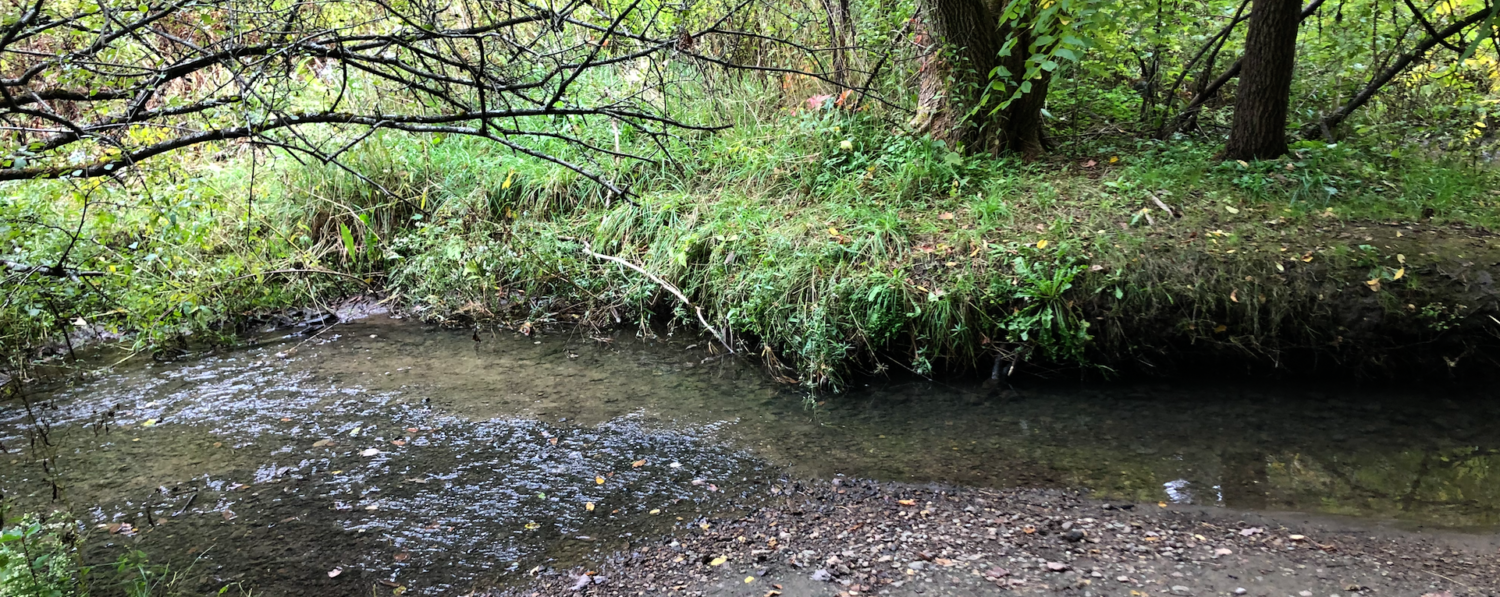
Levine, L. (ca. 2014). Mammal Tracks and Scat. Heartwood Press.
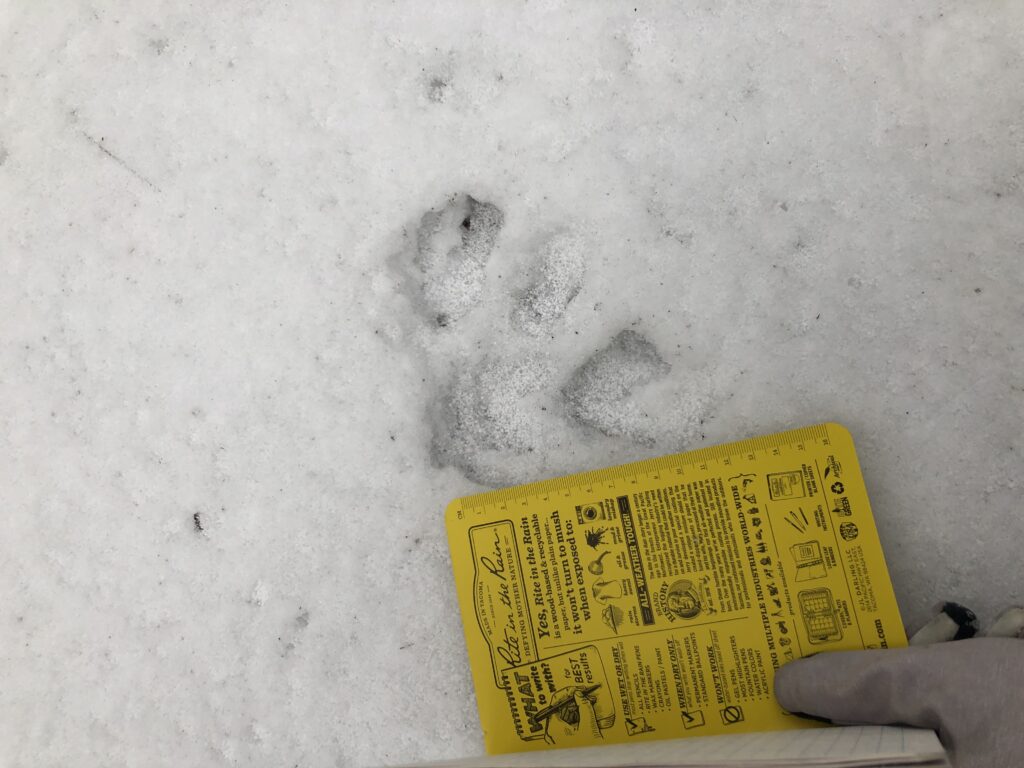
After examining the the track guide it is believed that these tracks were from a shrew. This is due to the fact that all four feet where placed in a little cluster at one time and they were pretty staggered. The term staggered that the 4 prints weren’t in a line. The sizing also seemed accurate to the sizing in the guide. In the guide a shrew is defined as having a straddle (distance between left and right foot) of 4 inches so the physical track was closest to this description compared to other animals.
Levine, L. (ca. 2014). Mammal Tracks and Scat. Heartwood Press.
McDonald, M. (2020). Personal Communication.

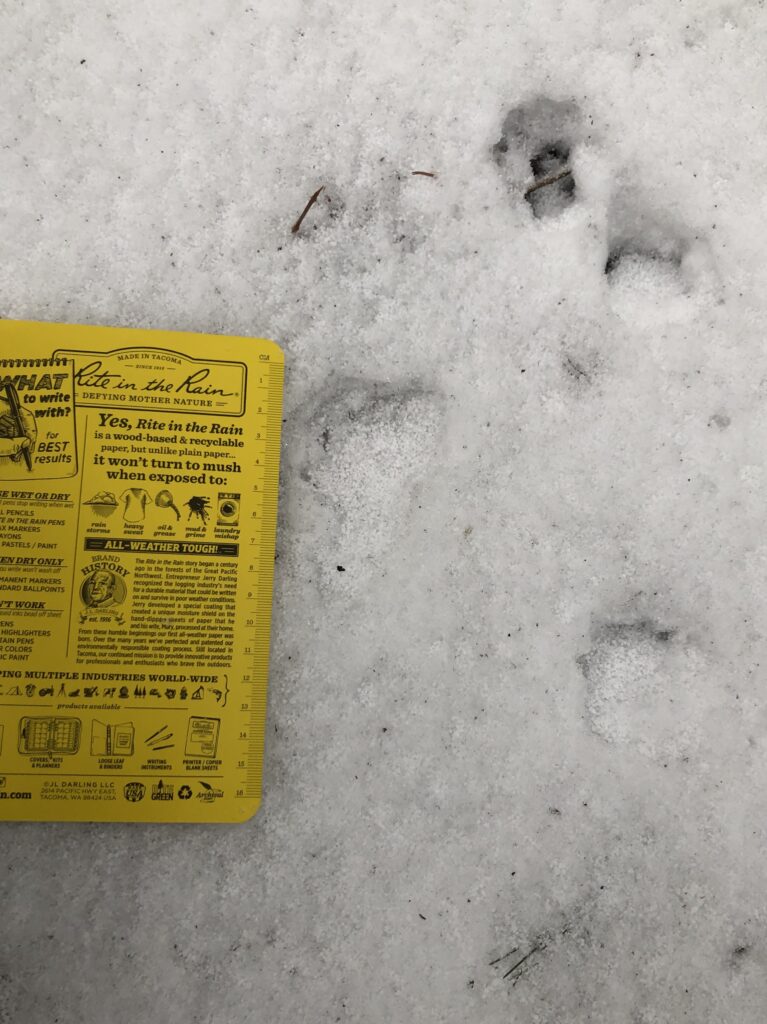
These tracks seemed to be from a raccoon. This is because the prints were staggered and there were patterns of small prints versus large prints. According to the track guide a raccoon footprint would be 6-10 cm in length and 4-5 cm in width. This description for a single print fit closest to the track pictured here.
Levine, L. (ca. 2014). Mammal Tracks and Scat. Heartwood Press.
McDonald, M. (2020). Personal Communication.
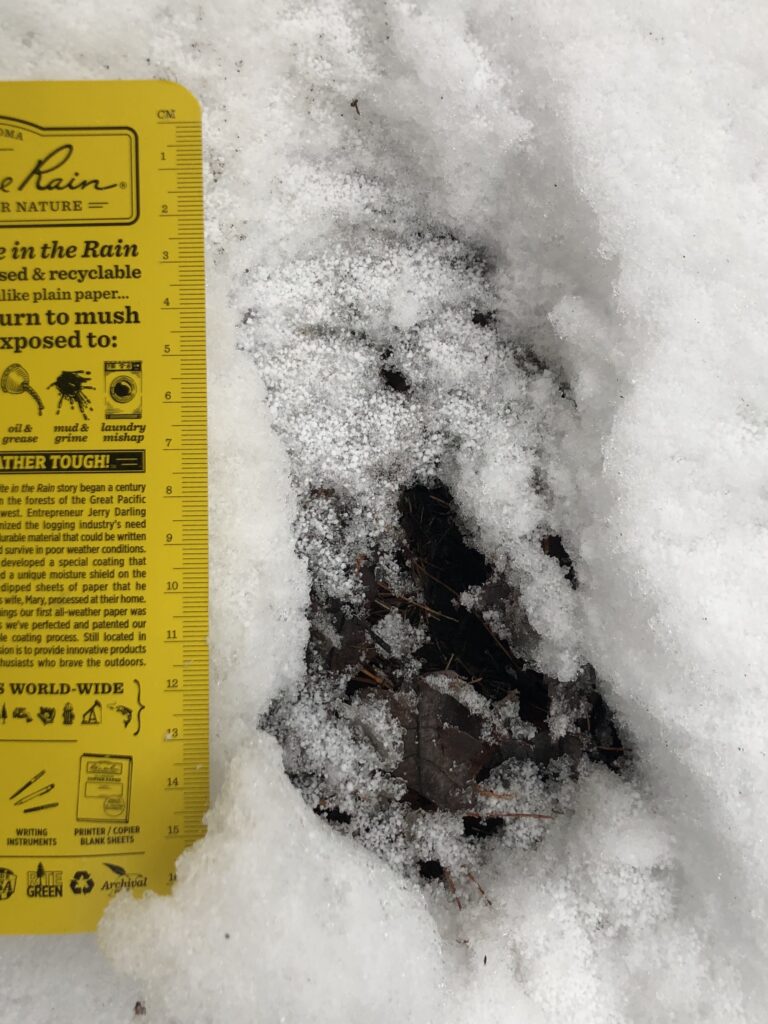
Considering the size of this track it was ruled out that it couldn’t be a humans since it was too narrow, but it also wasn’t correlating to any prints in the track guide since this print was 16 cm long. The possibility of it being from a rabbit was considered, but there weren’t two long prints side by side.
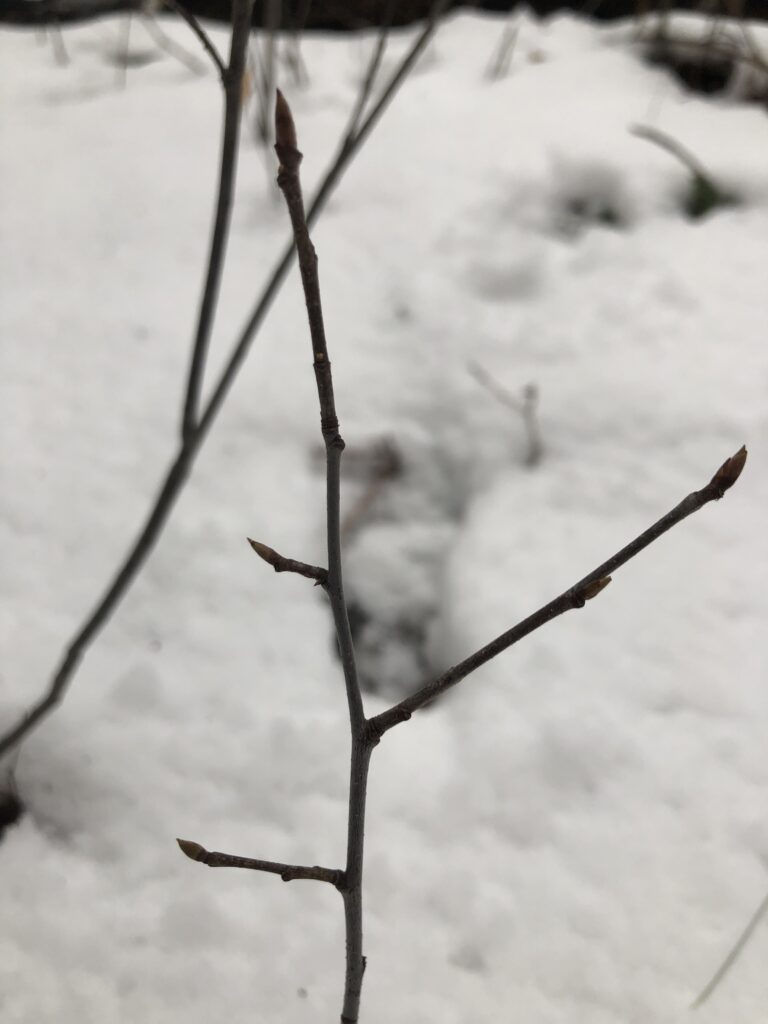
Massachusetts Audubon Society. (ca. 1943) Winter Twig Identification. South Lincoln, MA.
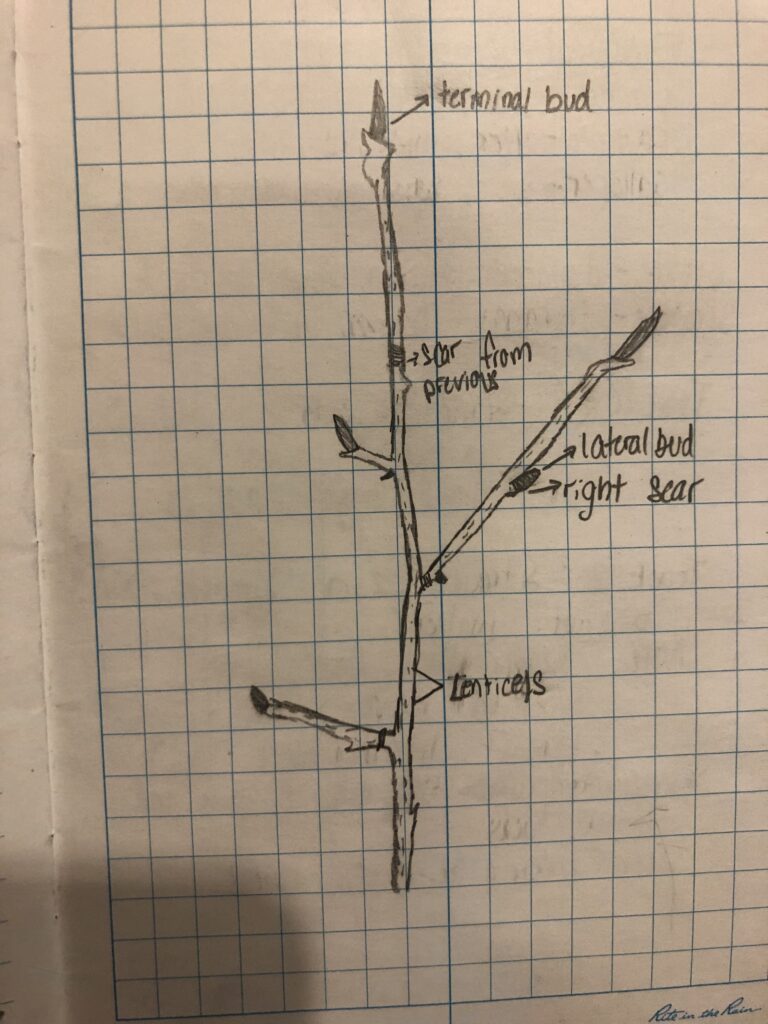
The picture above and the drawing below it are depicting what is believed to be an American Beech branch. This was identifiable from the cigar shaped buds and the alternate branching.
Massachusetts Audubon Society. (ca. 1943) Winter Twig Identification. South Lincoln, MA.
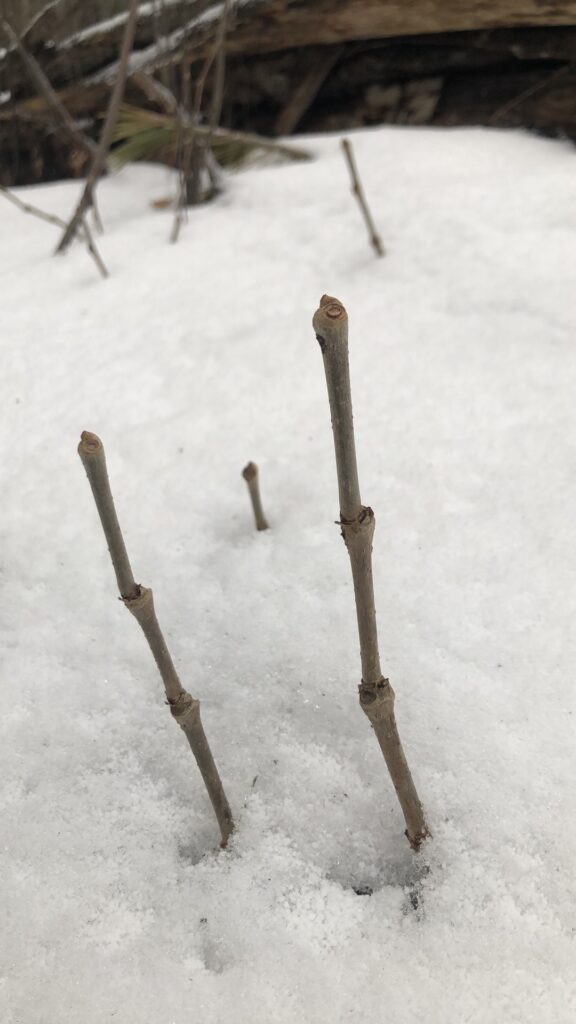
This branch was believed to be white ash.
Massachusetts Audubon Society. (ca. 1943) Winter Twig Identification. South Lincoln, MA.
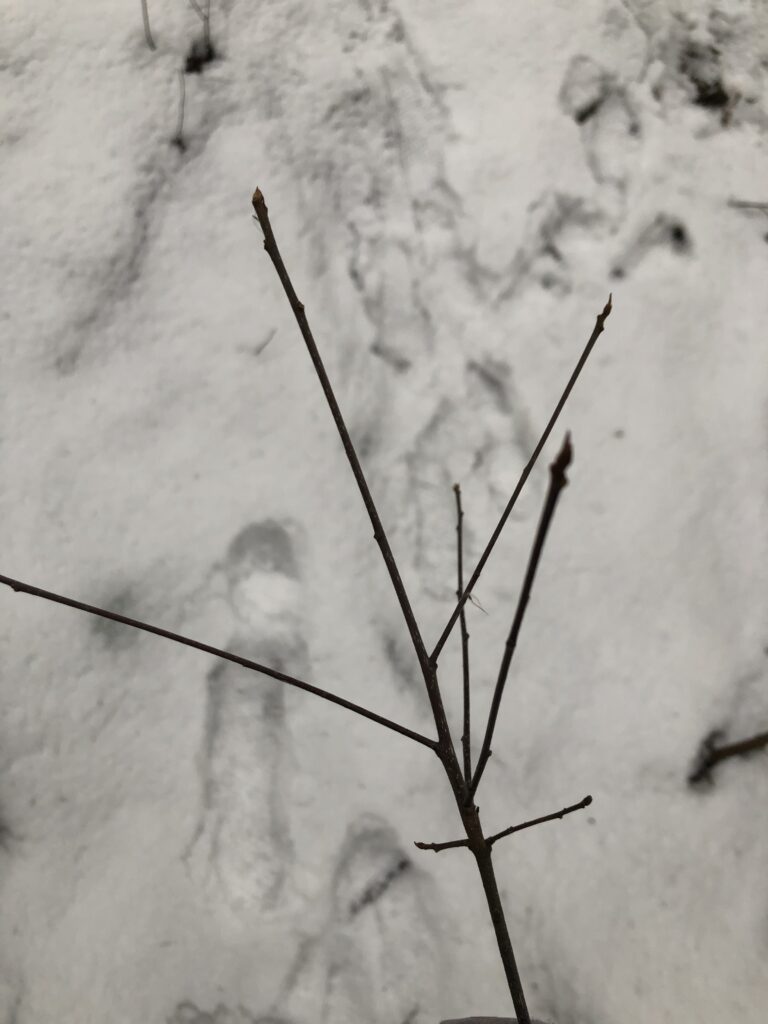
This branch seems to have the composition of a grey dogwood branch. This is due to the alternate branching and the shape of the bud.
Massachusetts Audubon Society. (ca. 1943) Winter Twig Identification. South Lincoln, MA.
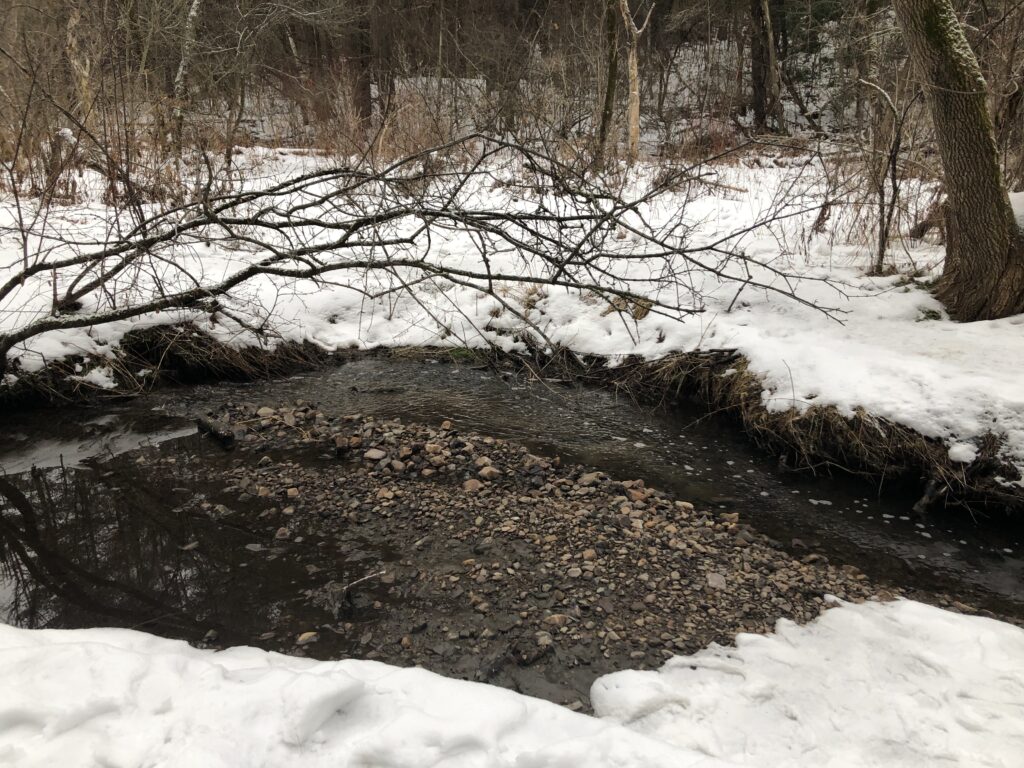
Since the last time I visited my site, a lot of things had changed. One very obvious thing is that the temperature dropped twenty degrees and the ground is covered in snow now. The bird noises are much more infrequent, resulting in about one chirp every 30 seconds. There were no more leaves left on the trees and the water was flowing much more heavily. Up the stream the water was moderately slow and this could be due to the transition into freezing over in the top layer, and the fact that that area is flatter there than down the stream.
Menice, K. (ca. 2020)
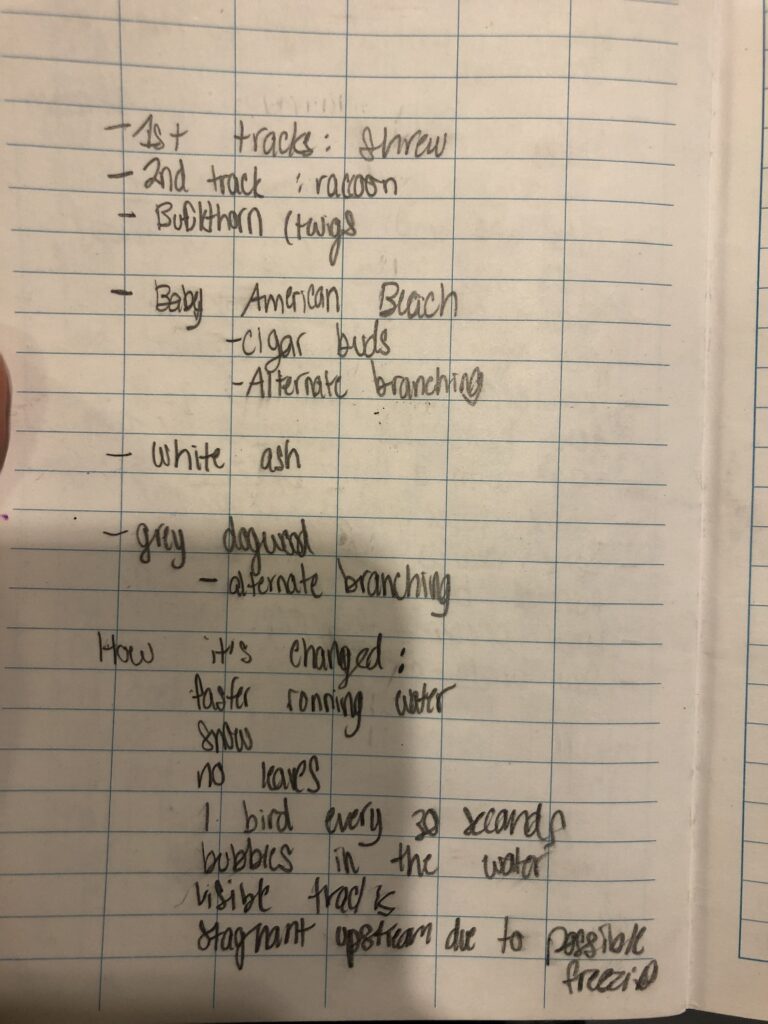
Menice, K. (ca. 2020)
